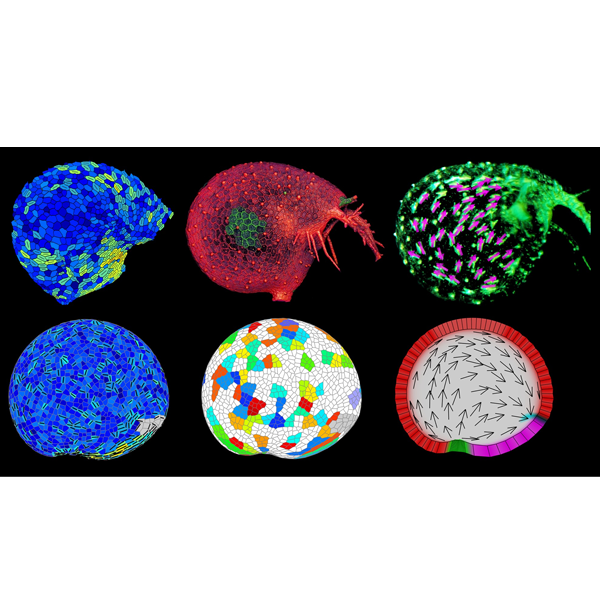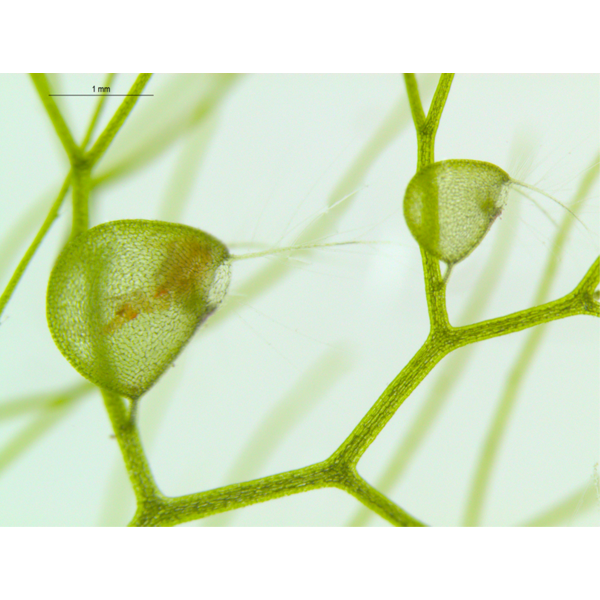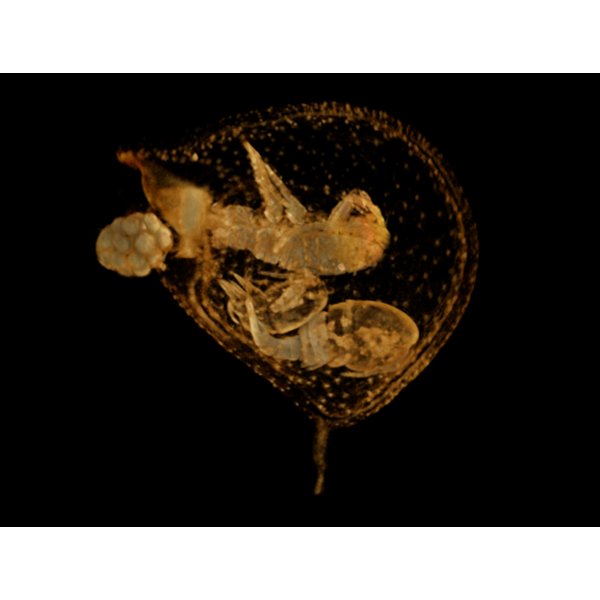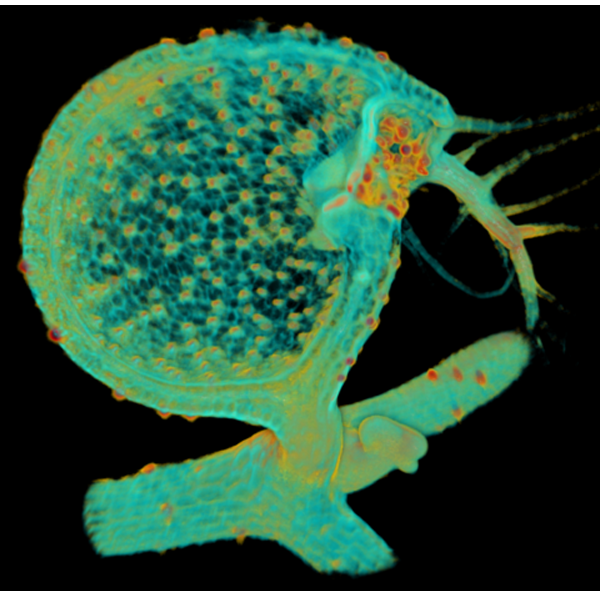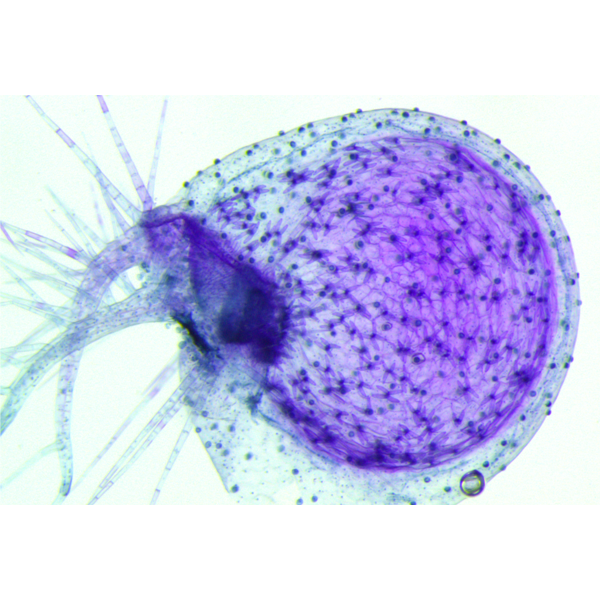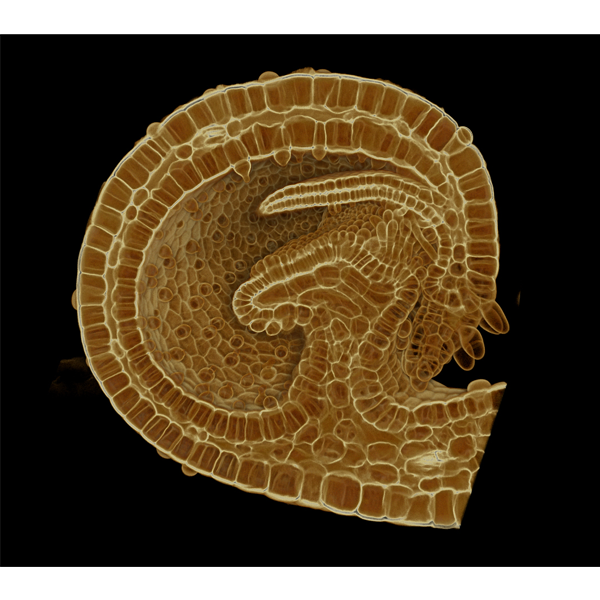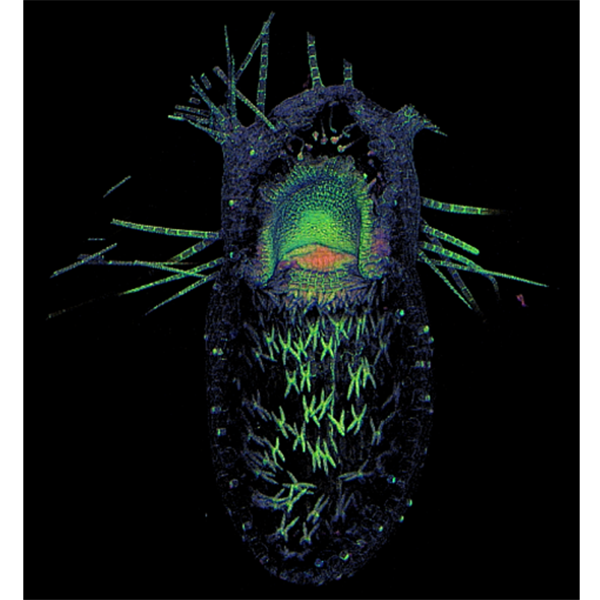How do plants produce the huge variety of leaf shapes we see around us? To answer this question, we are studying the ornate cup-shaped traps of the carnivorous plant Utricularia gibba (read more about carnivorous plants). These traps evolved from flat leaves, so we investigated whether the same genes control their development. In flat leaves two groups of genes work together to make the leaf blade. These two groups of genes are expressed on the upper and lower surfaces of the leaf. In flat leaves the boundary between these two is a plane through the middle of the leaf, whereas in carnivorous plant traps this domain is shifted. We used computational modelling and genetic experiments in U. gibba to show that this boundary controls the major axes of growth of the leaf, shaping it into a thin blade or a curved trap. By changing the domains of these key patterning genes plants can evolve a wide range of leaf shapes.
We also looked at how after the initial trap is formed the trap is shaped by growth in different directions oriented by a polarity field through the tissue. This is a similar mechanism to that used to grow flat leaves, but in U. gibba the growth generates a cup shaped trap as polarity propagates through a curved rather than a flat sheet of tissue.
Links
- Science Publication 2020: Evolution of carnivorous traps from planar leaves through simple shifts in gene expression
- PLOS Biology Publication 2019: Shaping of a three-dimensional carnivorous trap through modulation of a planar growth mechanism
- Let’s grow to joy division planes – Plants and Pipettes
- Carnivorous plants help uncover universal rules of plant development – TheScienceBreaker
- Nature’s secret recipe for making leaves | John Innes Centre (jic.ac.uk)
- Carnivorous plant study captures universal rules of leaf making (jic.ac.uk)
Funding
- Our leaf growth work ‘A Multiscale Approach to Genes Growth and Geometry’ was funded by the BBSRC as part of the Systems Approaches to Biological Research (SABR) [2007 initiative]
- Our carnivorous plant research is funded by the European Research Council under the European Union’s Seventh Framework Programme (FP/2007-2013) / ERC Grant Agreement no. 323028 .




